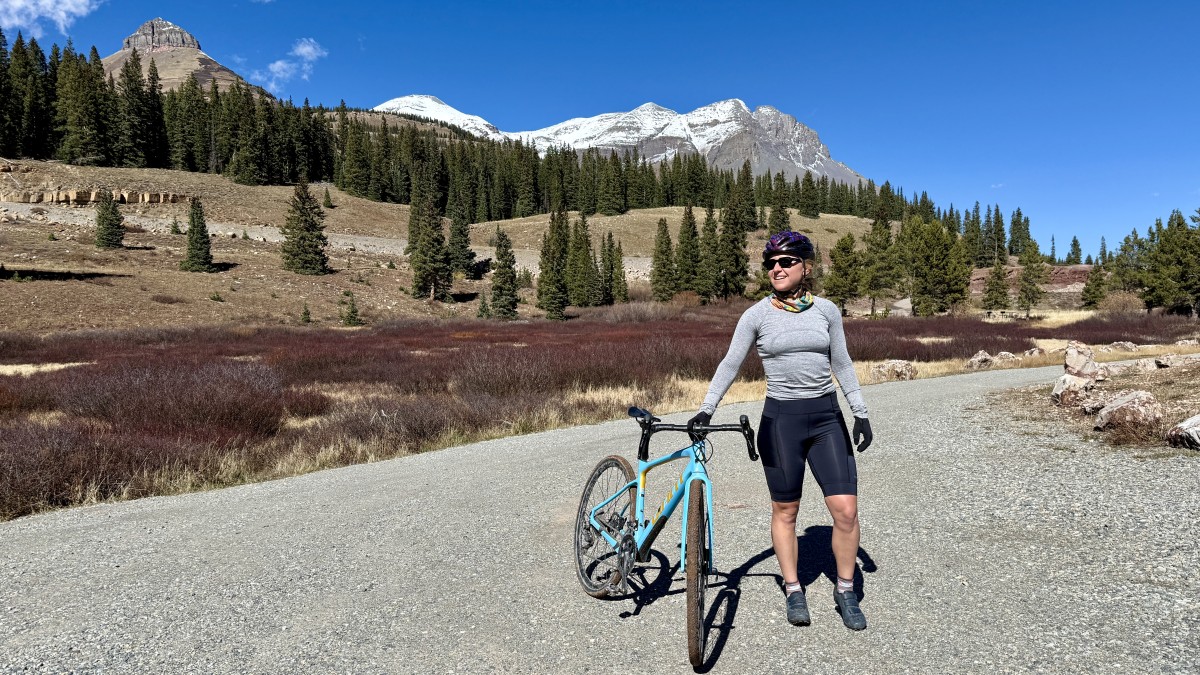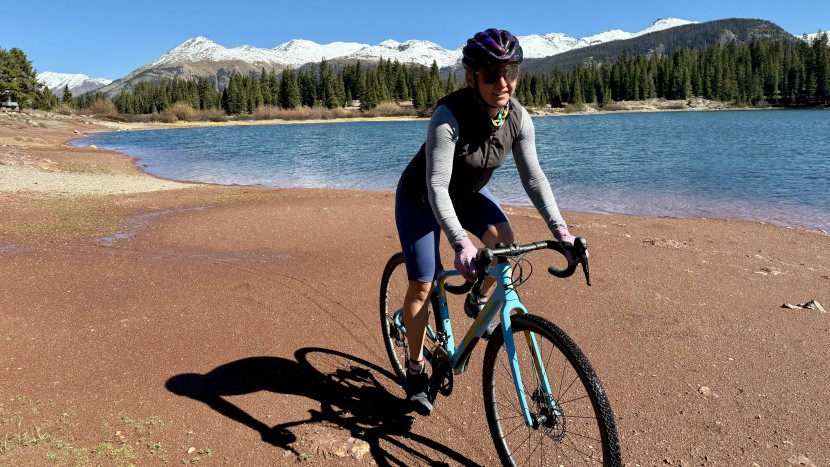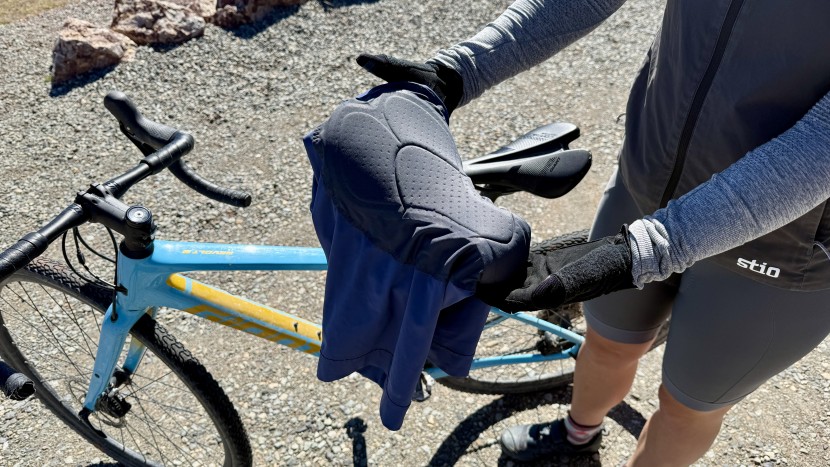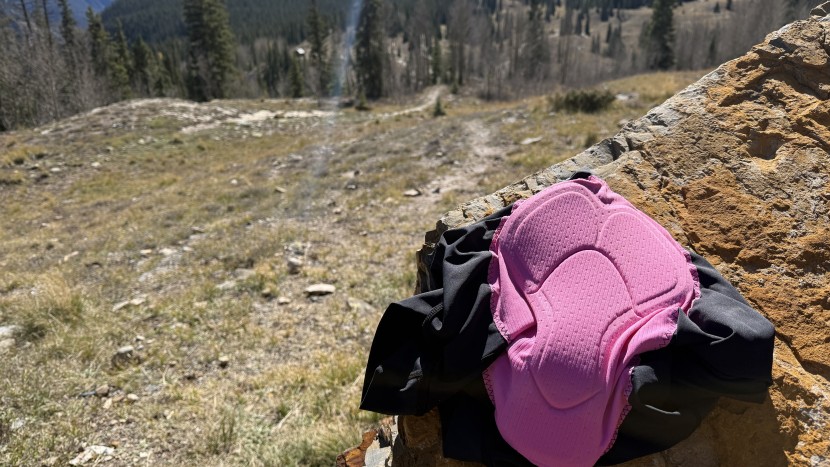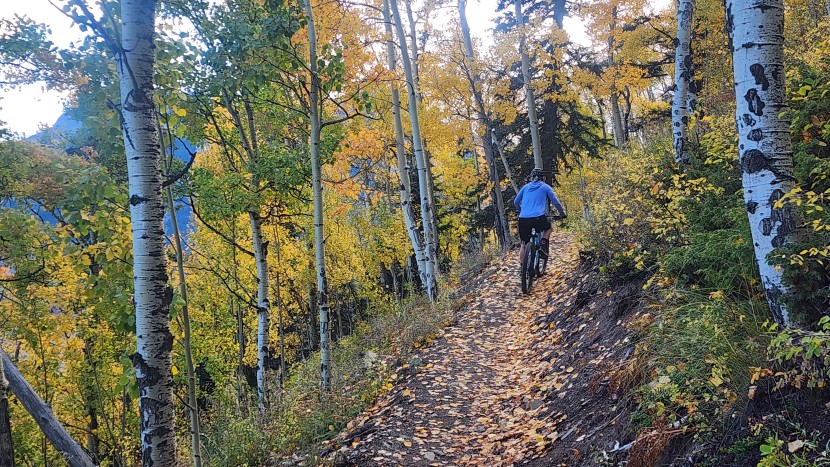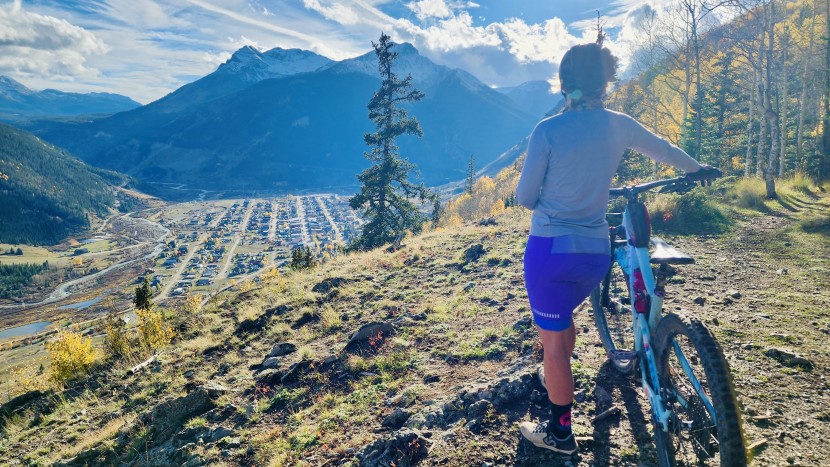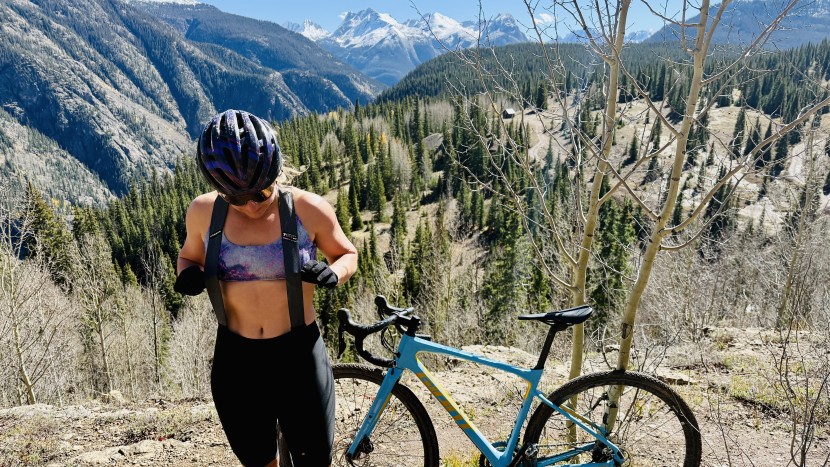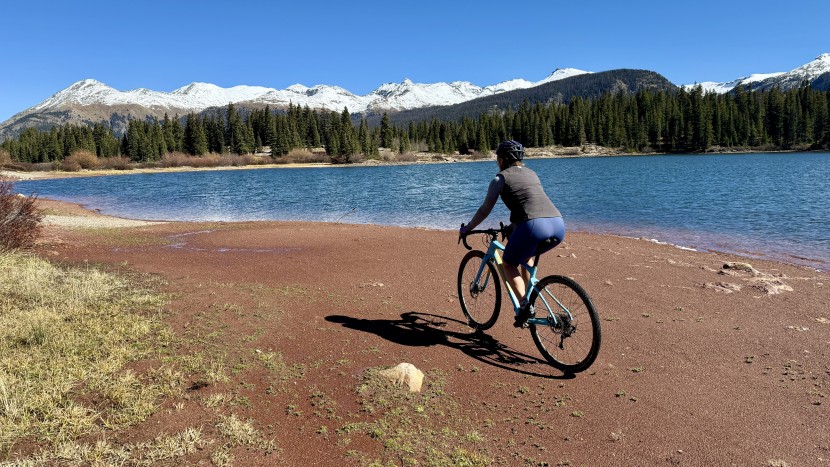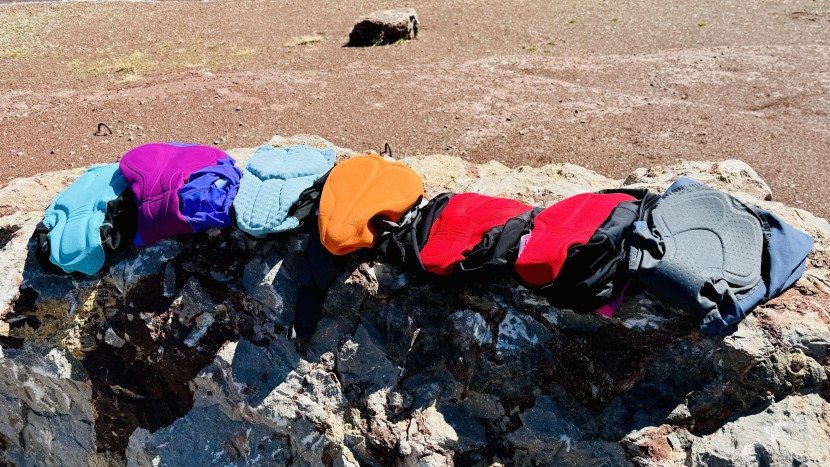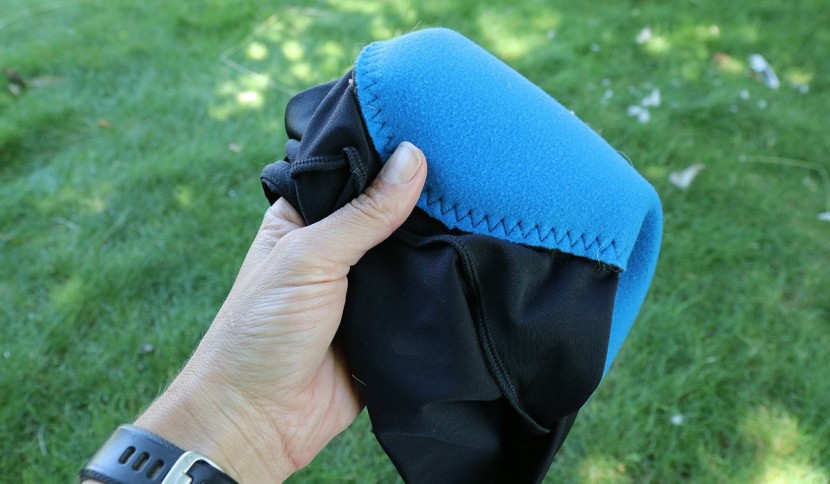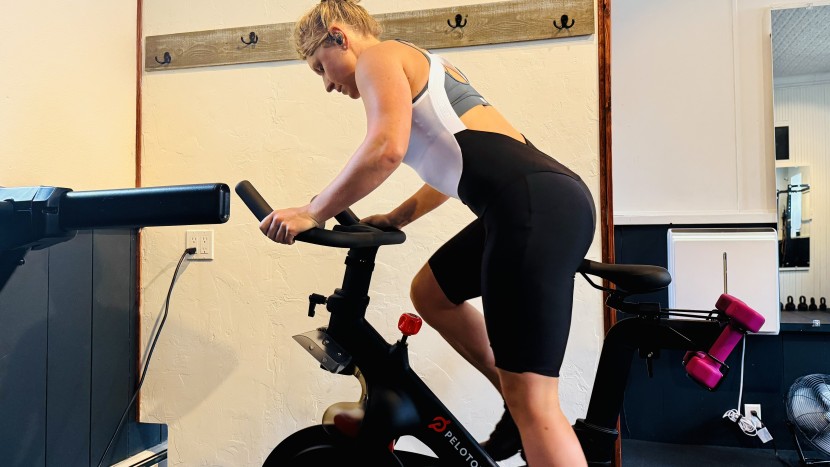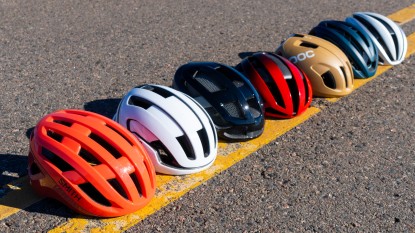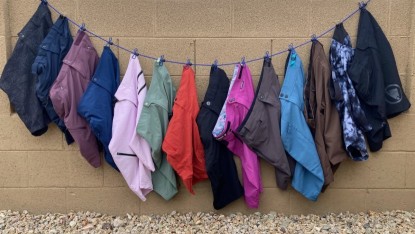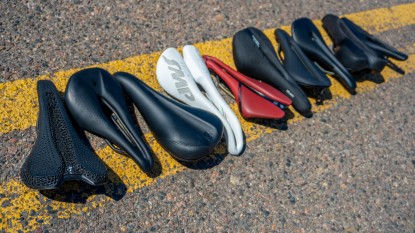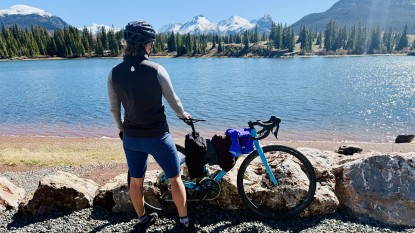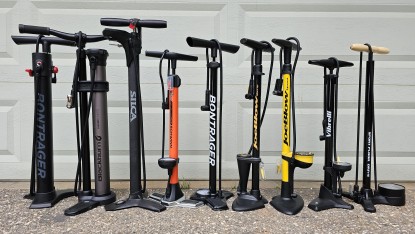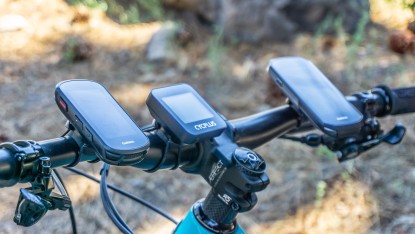Why special shorts?
Our test team rode many miles in our test lineup of bike shorts for women, selecting tried-and-true options that have stood the test of time. Here, you'll find the run-down on why you want special bike shorts, considerations to take into account, and what to look for once you decide what you want.
So, why special shorts to ride in? Let's face it: a seat/saddle that's only a few inches wide is NOT going to be that comfortable for hours on end. The sole purpose of a cycling short is to alleviate your discomfort so that you can focus on other aspects of the ride that matter, like enjoying the scenery or getting to that next feed zone. The shorts or bibs you choose should fade away into the background - you shouldn't even know you're wearing them. The right (or wrong) shorts can make or break a ride. In other words, it's a garment worth investing in.
A Short History of Bike Shorts
The great cycling short as we know it today is the product of many years of human suffering brought on by the desire to traverse vast swaths of space and time by bike. Early on, cycling shorts consisted of wool or cotton (fabrics sure to rub your skin raw after about ten minutes). If they had a chamois at all, it was some form of deer or sheep leather (like the chamois cloth you use to dry your car) and needed “chamois cream” (a product that is still around today) to keep the leather inside (not your backside) from cracking.
Now, synthetic fabrics, foam pads, and gels have replaced the leather-chamois of the past, and have paved (no pun intended) the way in revolutionizing the cycling world. These new materials offer your nether regions a wicking, padded comfort intended to reduce the wear and tear that sitting in a saddle for half a day brings along with it.
What Type of Riding Do You Do?
We encourage you to read our advice, below, with your particular goal in mind: maybe you're training for your first century, or maybe you want to do a multi-stage gravel race. Or, like a lot of us, you're looking for a short that fulfills a happy middle ground between offering you enough comfort to get your workout in without making you look like you inherited the backside of the Michelin Man blimp. We get it.
Cycling encompasses many activities, demands, weather conditions, and style considerations that determine what shorts you should choose. The midtown commuter might prefer a looser, longer style that offers more coverage and a little more modesty than the road racer, who is focused on performance and speed. The gravel enthusiast might want a short that will go the extra miles, while a beginner might not need the extra padding if they only plan to ride for an hour or two at a time.
The Age-Old Debate: Bibs Versus Shorts
Ah, the age-old debate of shorts versus bibs. People tend to fall heavily into one camp or another. Either you're a person who swears by bibs, races in bibs, and who would wear bibs to work except for the fact that you have to tuck in your work shirt, or you are the person who swears by shorts with every atom of your being. Then, there's us: product testers who have spent dozens of hours in both and find value in each style.
Here's the deal: both shorts and bibs are awesome in their own way, sort of like chocolate and vanilla ice cream. They are both incredible solutions to the issue caused by a narrow, hard saddle and a lot of miles to cover. In general, shorts are lighter, easier to take on and off, and tend to be less expensive, while bibs move better with your body and tend not to dig into your stomach as much as shorts do.
The Argument For and Against Bibs
Bibs are the way they are because of the shoulder straps that hold them in place. These straps not only hold the chamois closer to your body (minimizing chafing - a very important factor), but they are also more comfortable around the waist. Shorts use a waistband to keep them in place, which either digs into your stomach or slips down too far, which can lead to chafing and a sunburned lower back. The beauty of bibs is that they don't have a waistband, so you can ride for hours without abdominal pressure or distress. No one wants a waistband digging into their sides.
The downside to bibs is that some aren't designed to be taken on and off for bathroom pit stops. We would highly encourage you to buy ones designed specifically for women so that you can easily take a nature break. Another potential downside to bibs is that the straps can cause a build-up of heat on hot days. Despite these potential negatives, we still tend to think that the positives of bibs outweigh the negatives for most riders.
The Argument For and Against Shorts
Overall, shorts are less of a hassle. Sure, good women's specific bibs make it easy to use the bathroom, but shorts are just shorts. They're more versatile off the bike - making it easy to slip shorts, pants, or skirts on over them. The other benefit is that without an upper part, you can generally stay a little cooler on really hot rides.
Even given all the good things, shorts are still not as comfortable as bibs. Because they are held in place by a waistband, they tend to dig into women's stomachs and cause discomfort. This waistband also doesn't hold the chamois in place very well; it shifts around during riding, ultimately leading to a chafed nether region. Trust us, you do not want this to happen.
Some riders use shorts exclusively for shorter rides for the convenience, but stick to bibs for the more serious stuff. Other people swear by bibs because, honestly, ladies, they do hold all the stuff in where it needs to be. Not that we advocate suspenders, per se, but these things have the capacity to make even the most middle-aged among us look slightly superhero-esque.
The Chamois Goes Under Where?
The next major decision point when selecting a cycling short to carry you through the miles is what is called the chamois. The chamois is a highly evolved and super-specific piece of equipment intended to keep you padded, protected, and as high and dry as you can be on a long bike ride. Just like people, chamois come in all different shapes and sizes, and they come in male and female versions. Chamois for men are longer, narrower, and tend to have less material in the middle of them, whereas women's chamois are slightly shorter, wider, and have a bit more padding throughout. These structural differences are intended to provide each rider with protection where they anatomically need it the most.
Beyond a chamois' “gender,” its size is also an important consideration. Do you go for rides shorter than an hour? Then it stands to reason that you don't need a chamois designed to go hundreds of miles. You can get away with something much less aggressive, which is going to 1) cost you less, and 2) be less bulky. However, if you're all about long rides, you'll need a high-quality chamois to help you through them (unless you like sore sit bones, which would be strange).
So, how can you tell a high-quality chamois from a not-so-great one? Well, sometimes you have to do what we do at OutdoorGearLab and take a chamois for a spin on your bike to see how well it fits your body and your saddle. If that's not a possibility, however, there are two key aspects to consider.
What to Look for in A Chamois
2D versus 3D chamois: If you take a pair of cycling shorts and turn them inside-out, you expose the chamois. If you don't see or feel any variation in the thickness of the material (if it looks like one big giant pillow for your butt), that is called a “2D” chamois. If, however, you see mountains and valleys and weird crop-circle-like patterns, then you have the higher-quality 3D chamois. So, aside from looks, what is the difference?
If you try to bend the 2D chamois in half, you will notice that it tends to bunch around the edges. It also tends to move as one entity - so, if you can imagine that large pillow under you as you ride your bike, those parts of the fabric that bunch up will rub on your skin. Add some moisture (a.k.a. sweat), and you have the perfect storm for the making of a saddle sore. What is a saddle sore, you ask? If you can't imagine it, we'll let Google answer that one.Let's do the same thing with the 3D chamois. Due to the variations in thickness in the chamois and “heat stitching” (i.e., the topography), the chamois can bend and conform to multiple shapes without bunching up as a 2D chamois does. This means you are less likely to have saddle sores or chafing. Magically, the chamois moves smoothly between you and the saddle. If you're still unsure on which one to get, take our word, you want the 3D chamois.
Chamois "memory": Memory doesn't mean that the chamois records the things you say on a long, hard climb. Instead, it refers to the resiliency of the chamois to “bounce back” after you spent a good six hours pounding it down to nothing in the saddle.
There isn't a great way to test this aside from wearing a short and keeping tabs on how well it performs (this is why we do this for you in our gear reviews), but a good rule of thumb is that the higher the quality of the short, the more likely it is to have a chamois with memory.
A good way to get a feel for this aspect of a cycling chamois (other than using it) is to read reviews of various products. What you will find is that brands that have been around for a while typically have landed on a chamois that works well for a specific purpose. The higher-end short offered by each company has been calibrated, tested, revised, and tested again to protect its rider for the demands of this incredibly demanding, but fun, sport called cycling.
Drop Seat Function
Nature calls, even when you're biking. We talked about this earlier, but it's worth noting again that bibs/shorts designed specifically for women who use the bathroom are worth investing in. Yes, you read that correctly. You should make sure that your bibs are designed to be easy to take on and off while riding without having to bare it all. We've tested all of our bibs/shorts on the ease of being able to do this while in a full kit - and trust us, it makes a difference.
A Short for Every Type of Rider
There are shorts for the hard-core road racer, the ultra-endurance gravel cyclist, the commuter, and the spin-class aficionado. The cool thing? There is also a vast selection of shorts available to accommodate your version of cycling, combining function, comfort, and style as an expression of what cycling means to you. The bottom line is that, if you want to ride a bike, you're going to want (scratch that, need) a cycling short. The great news is that there is the perfect short out there for you waiting to take you on the next great adventure.

